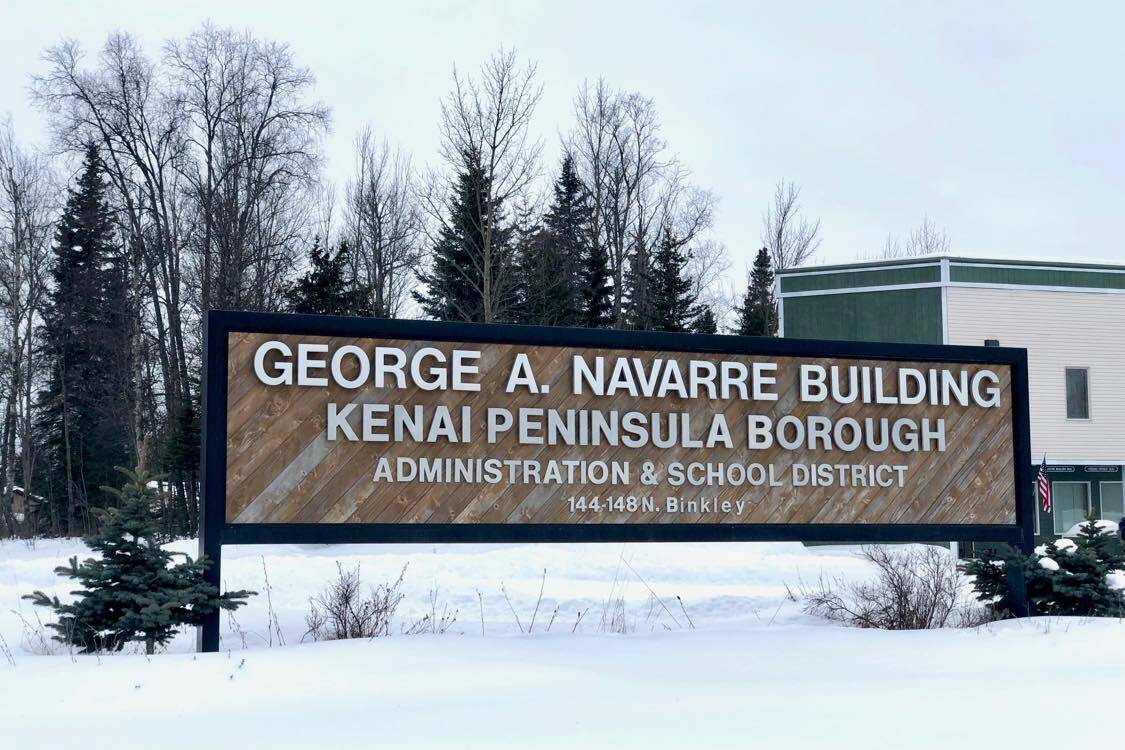A majority of surveyed property owners in two northern Kenai Peninsula Borough subdivisions think the borough should extend the Kenai Spur Highway another 10 miles north, to Point Possession.
Further extension of the highway is also the formal recommendation of a borough task force formed by the Kenai Peninsula Borough Assembly late last year to evaluate the road extension and make recommendations. That group, the North Road Extension Advisory Task Force, convened eight times in 2022 — for the last time in September. Their report was presented by Kenai Peninsula Borough Roads Director Dil Uhlin during the assembly’s Nov. 15 meeting.
The efforts of the task force, composed of seven voting members, build on previous expansion of the Kenai Spur Highway into communities north of Nikiski.
A previous extension of the road was completed in 2021 and came after years of work. The borough assembly, following a recommendation from the Road Service Area Board, accepted more than $5 million in federal funds to build a gravel road from Captain Cook Recreation Area to Otter Creek.
Now, they’re examining whether to extend it further: from its current terminus to Point Possession, at the top of the Kenai Peninsula.
The project would provide better access to the Gray Cliff and Moose Point subdivisions and include periodic pullouts, improved beach access and bridge conditions and the installation of a solid waste transfer facility near Otter Creek in Point Possession, according to the task force’s summary report.
In describing the public need for further extension of the road, the task force outlined the way services to residents in the area are currently limited. Access to the area that would be serviced by the extension is currently limited to off-road vehicles and foot travel, for example, which further affects what emergency services are available for residents and property owners in the area.
The report also points to the connection a road extension would provide to children in the area to Nikiski-area schools. There are two school-aged children living in the area and more families are interested in relocating to the subdivisions, the report says. Connecting the communities to school would allow better access to education and encourage new families to move to the area.
There’s also the issue of property taxes, which land parcels in the Moose Point and Gray Cliff subdivisions have been subject to for 40 years. The task force says the borough has collected taxes on those parcels even though the services those taxes fund cannot necessarily be provided.
“Property taxes have been collected on (Gray Cliff Subdivision) and (Moose Point Subdivision) parcels for 40 years with sub-standard and unsafe access to what the taxes are purposed for, e.g: fire and emergency services, road services, and community safety,” the report says.
Uhlin said during his Nov. 15 presentation detailing the results of the task force that the sentiment was underscored by the feedback the task force received from residents.
“Some of their explanations for why they wanted to further extend or put additional work into the current extension was that the residents felt that they had paid into the system for 40 years and would like to see the North Road extended to the end of subdivision and to do some additional building to the current extension,” Uhlin said.
Joe Ross, who sits on the task force, told assembly members that he has been frequenting the Gray Cliff Subdivision since the 1980s, when he and his brother won land parcels in the area. Even though residents have been paying borough taxes, Ross said, that money hasn’t always made its way back to their rural community.
“We’re paying fire service area taxes, road service area taxes, Nikiski Rec Center taxes, and no money has been spent out there up until recently,” Ross said. “Most of what we did on the existing road extension was federal money.”
In all, the task force estimates a further 10-mile extension would cost about $28.9 million. That includes, among other things, roughly $8.7 million for a developed road bed, $2 million in improvements to beach access, $3 million in accommodations for emergency vehicles, $2 million in environmental improvements and $2 million for the development of a solid waste transfer facility.
The summary report suggests 16 potential funding sources for the extension, including infrastructure money from the federal government, state capital improvement requests through the Department of Transportation & Public Facilities and other grant opportunities. That’s on top of potential borough funding through in-kind donations or direct financial support.
More information about the North Road Extension can be found on the Kenai Peninsula Borough’s website at kpb.us.
Reach reporter Ashlyn O’Hara at ashlyn.ohara@peninsulaclarion.com.

